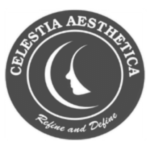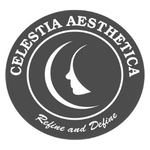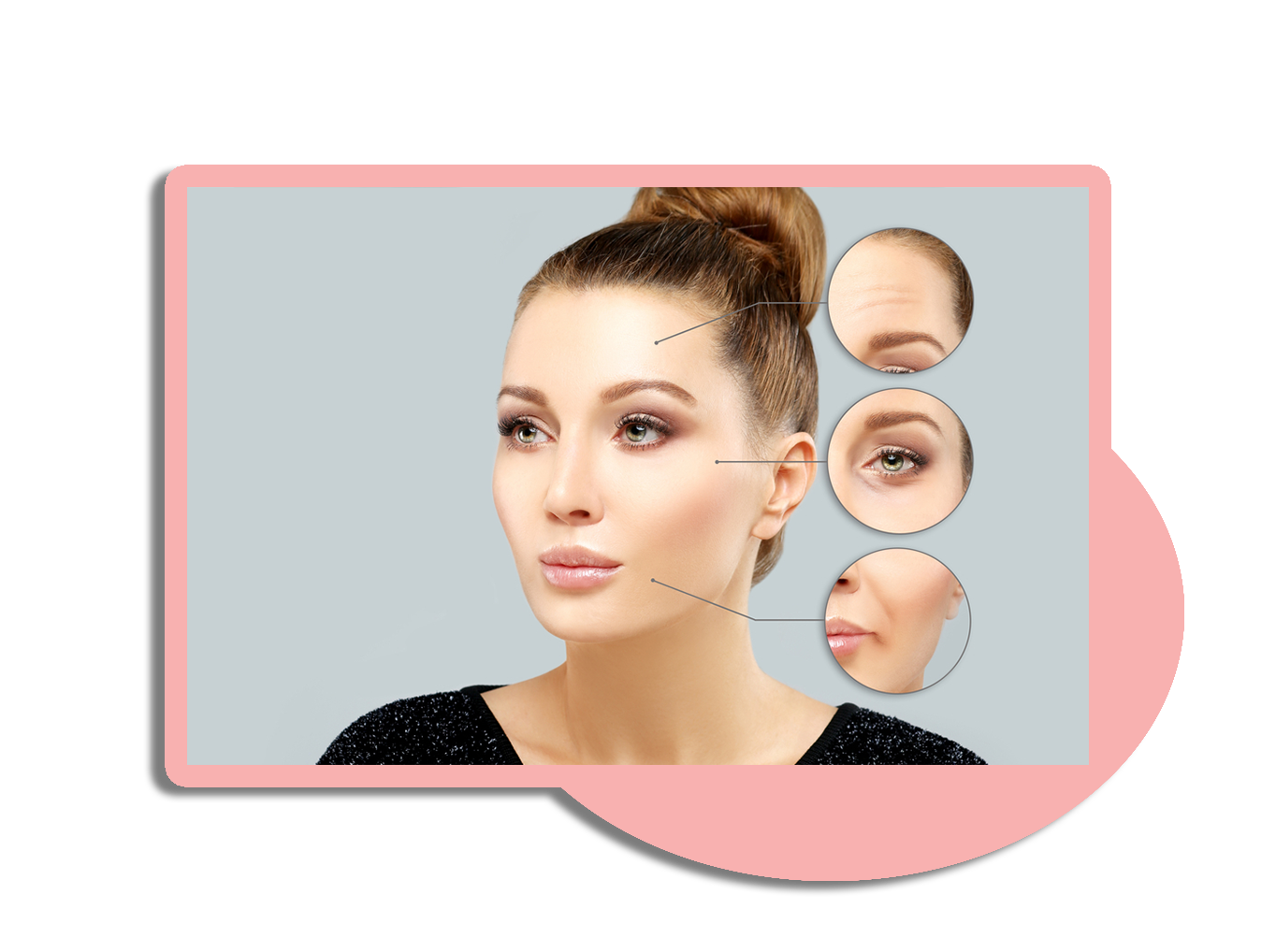
Botulinum Toxin
The cosmetic form of botulinum toxin, sometimes referred to as “Botox” by patients, is a popular injectable that temporarily reduces or eliminates facial fine lines and wrinkles. The most commonly treated areas are frown lines, forehead creases, crow’s feet near the eyes. Several other areas have been treated such as thick bands in the neck, thick jaw muscles, lip lines and gummy smiles.
Botulinum toxin is a purified substance that’s derived from bacteria. Injections of botulinum toxin block the nerve signals to the muscle in which it was injected. Without a signal, the muscle is not able to contract. The end result is diminished unwanted facial wrinkles or appearance. Commonly known types of botulinum toxin type A injections include Botox®, Dysport®, Xeomin® and Jeuveau®.
Botulinum toxin can be used to
- Smooth crow’s feet, forehead furrows, frown lines, lip lines and bunny lines
- Diminish neck bands
- Improve the appearance of skin dimpling of the chin
- Lift the corners of the mouth
- Soften a square jawline
- Correct a gummy smile
The FDA has approved the use of Botox® for the frown lines and crow’s feet, while Dysport® and Xeomin® are approved for frown lines only. All other uses are considered “off label.”
Chemical Peel
A chemical peel uses a chemical solution to improve the texture and tone of your skin by removing the damaged outer layers.
Although chemical peels are used mostly on the face, they can also be used to improve the skin on your neck and hands. Sun exposure, acne or just getting older can leave your skin tone uneven, wrinkled, spotted or scarred.
A chemical peel is one of the most cost-effective ways to improve the appearance of your skin. The potential result of the chemical peel depends on the type of chemical and technique used.
What a chemical peel can improve
- Acne or acne scars
- Fine lines and wrinkles
- Irregular skin pigmentation
- Rough skin and scaly patches
- Certain scars
- Sun-damaged skin
What a chemical peel can’t do
- Treat deep facial lines or wrinkles
- Significantly tighten loose or sagging skin
- Remove deep scars
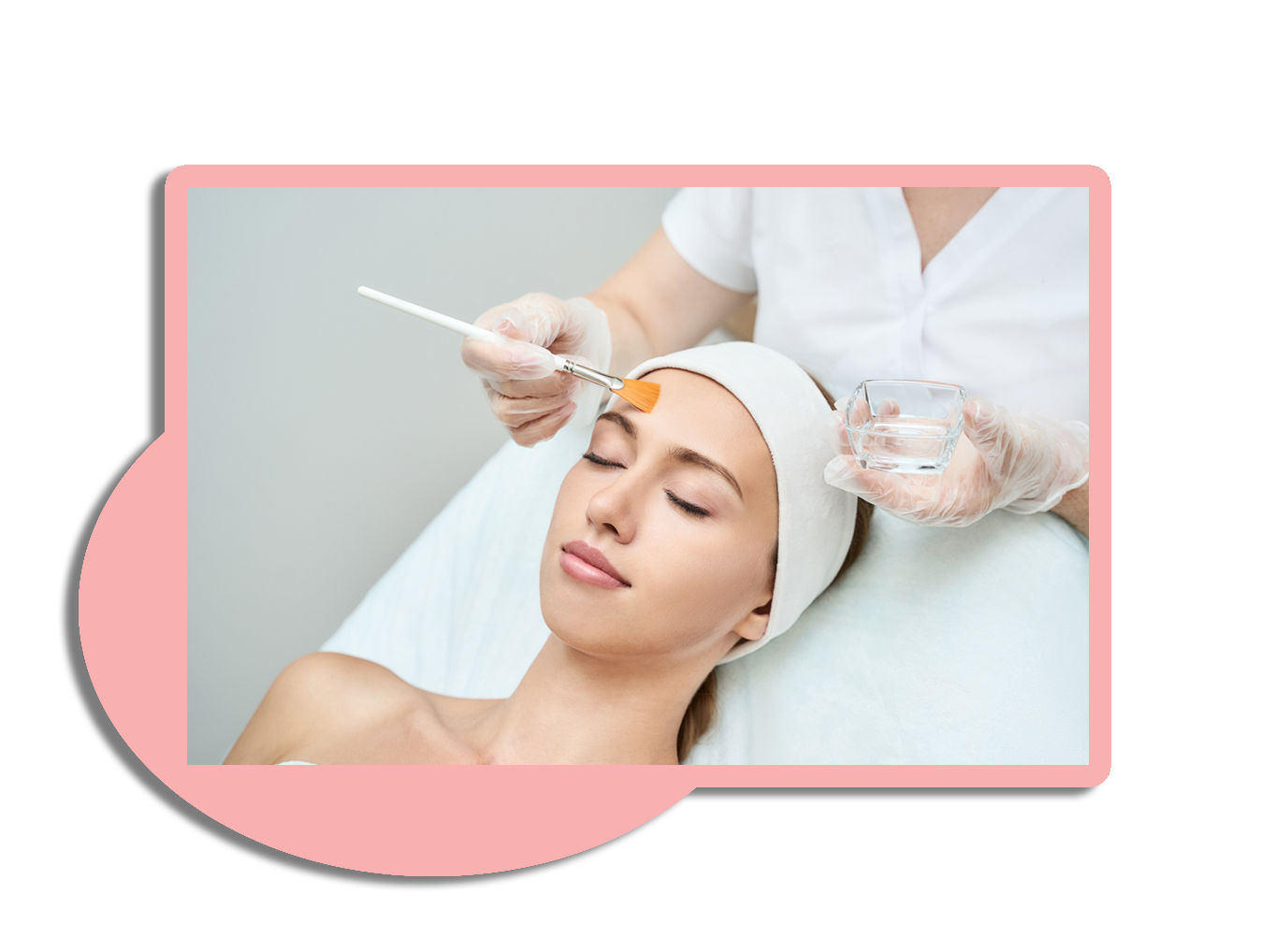

Dermabrasion
Dermabrasion and dermaplaning help to “refinish” the skin’s top layers through a method of controlled surgical scraping. The treatments soften the sharp edges of surface irregularities, giving the skin a smoother appearance.
Dermabrasion is most often used to improve the look of facial skin left scarred by accidents or previous surgery, or to smooth out fine facial wrinkles. It’s also sometimes used to remove the pre-cancerous growths called keratoses. Dermaplaning is also commonly used to treat deep acne scars.
Both dermabrasion and dermaplaning can be performed on small areas of skin or on the entire face. They can be used alone or in conjunction with other procedures such as facelift, scar removal/revision or chemical peel.
If you’re considering surgery to refinish the skin, this information will give you a basic understanding of the procedure – when it can help, how it’s performed and what results you can expect. It cannot, however, answer all of your questions, as much depends on your individual circumstances. Please ask your doctor about anything you do not understand.
Common uses
Dermabrasion can be used to treat scars caused by acne or other injuries, fine wrinkles, sun-damaged skin, rhinophyma and precancerous skin patches.
Laser Hair Removal
Laser hair removal is a noninvasive technique that uses highly concentrated light to penetrate hair follicles. The laser light is absorbed by the pigment in the hair shaft in the follicle-generating heat which damages the follicle to inhibit future hair growth. Therefore, plucking hair before treatment reduces the efficacy of the laser treatment as the target is absent.
Because laser hair removal only affects actively growing hair follicles, it may take several laser hair removal treatments to provide significant hair reduction. Additionally, while laser hair removal effectively slows hair growth, it doesn’t guarantee permanent hair removal. Periodic maintenance treatments may be needed.
Is laser hair removal permanent?
Although laser hair removal reduces the number of unwanted hairs in a given area, it doesn’t get rid of them completely. When the hair grows back, they will be finer, lighter, and fewer in number. Most people require between four and six sessions, and occasional maintenance may be required.
How does laser hair removal work?
Laser hair removal uses laser beams to heat up and damage the hair follicles, which temporarily halts hair production.
Common treatment areas for laser hair removal
Most commonly, laser hair removal is used to treat the face, body, legs, armpits and pubic area.


Microdermabrasion
Microdermabrasion treatments use a minimally abrasive instrument to gently sand your skin, removing the thicker, uneven outer layer, and has many benefits.
This type of skin rejuvenation is used to treat light scarring, discoloration, sun damage and stretch marks.
What microdermabrasion can do
- Improve age spots and blackheads
- Improve hyperpigmentation (patches of darkened skin)
- Exfoliate your skin, resulting in a refreshed appearance
- Lessen the appearance of stretch marks
- Reduce fine lines and wrinkles
- Reduce or eliminate enlarged pores
- Treat acne and the scars left by acne
Microdermabrasion helps to thicken your collagen, which results in a younger looking complexion. Collagen is a protein in your skin which is abundant when you’re a child and makes skin appear taut and smooth. Collagen production declines as we age, resulting in looser, uneven skin.
Spider Vein Treatment
There are effective, safe and relatively painless methods available for reducing spider veins. The most common spider vein treatment involves the injection of a solution into each affected vein, causing the vein to collapse and fade. Laser treatments are also available for the reduction or removal of spider veins.
What are spider veins?
In some women, spider veins—those small clusters of red, blue or purple veins that appear on the thighs, calves and ankles—become noticeable at a young age. For others, the veins may not become obvious until much later.
Causes of spider veins
A number of factors may contribute to the development of spider veins in the legs, including:
- Heredity
- Hormonal shifts
- Occupations or activities that require prolonged sitting or standing
- Pregnancy
- Weight fluctuation
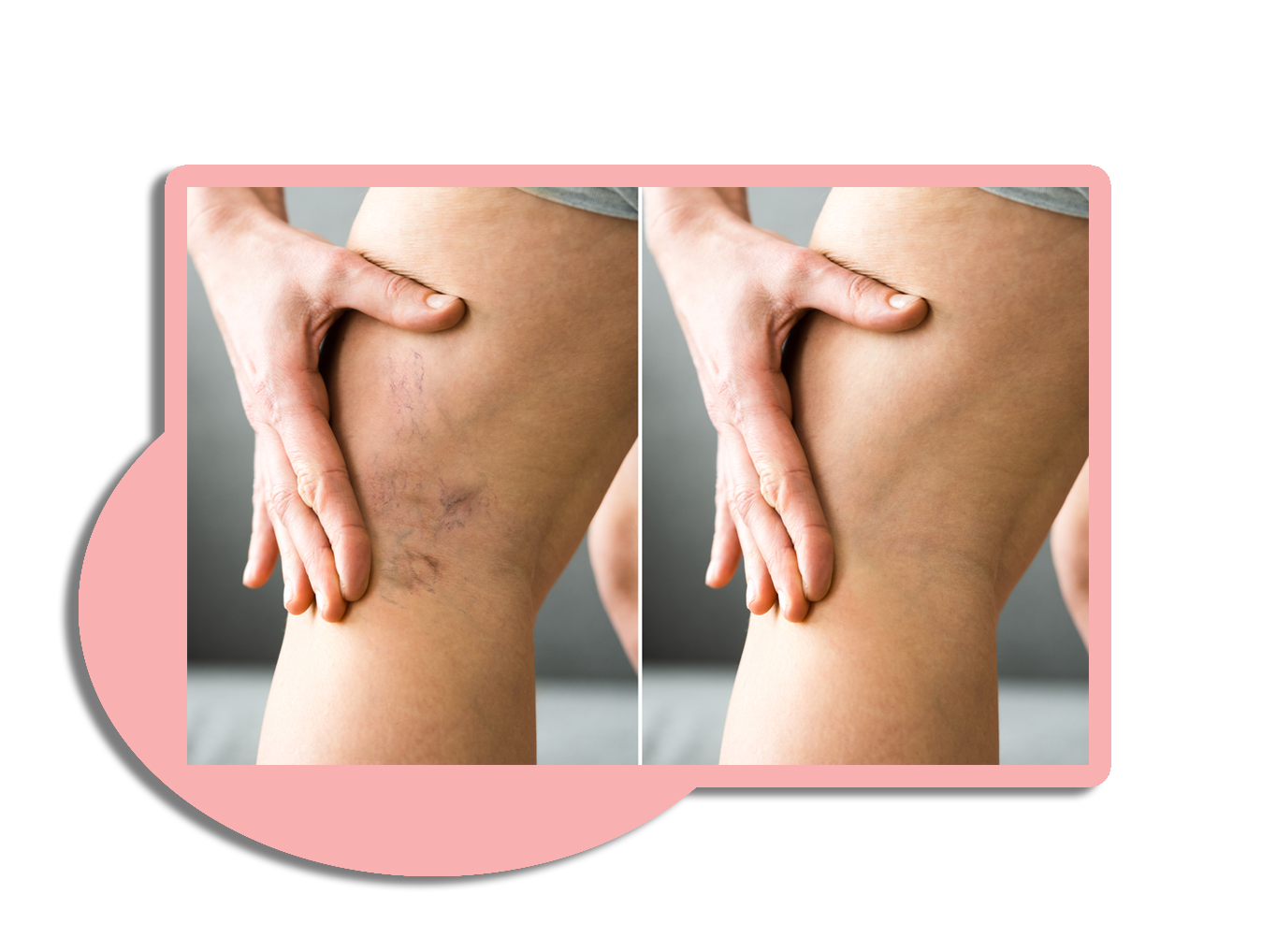
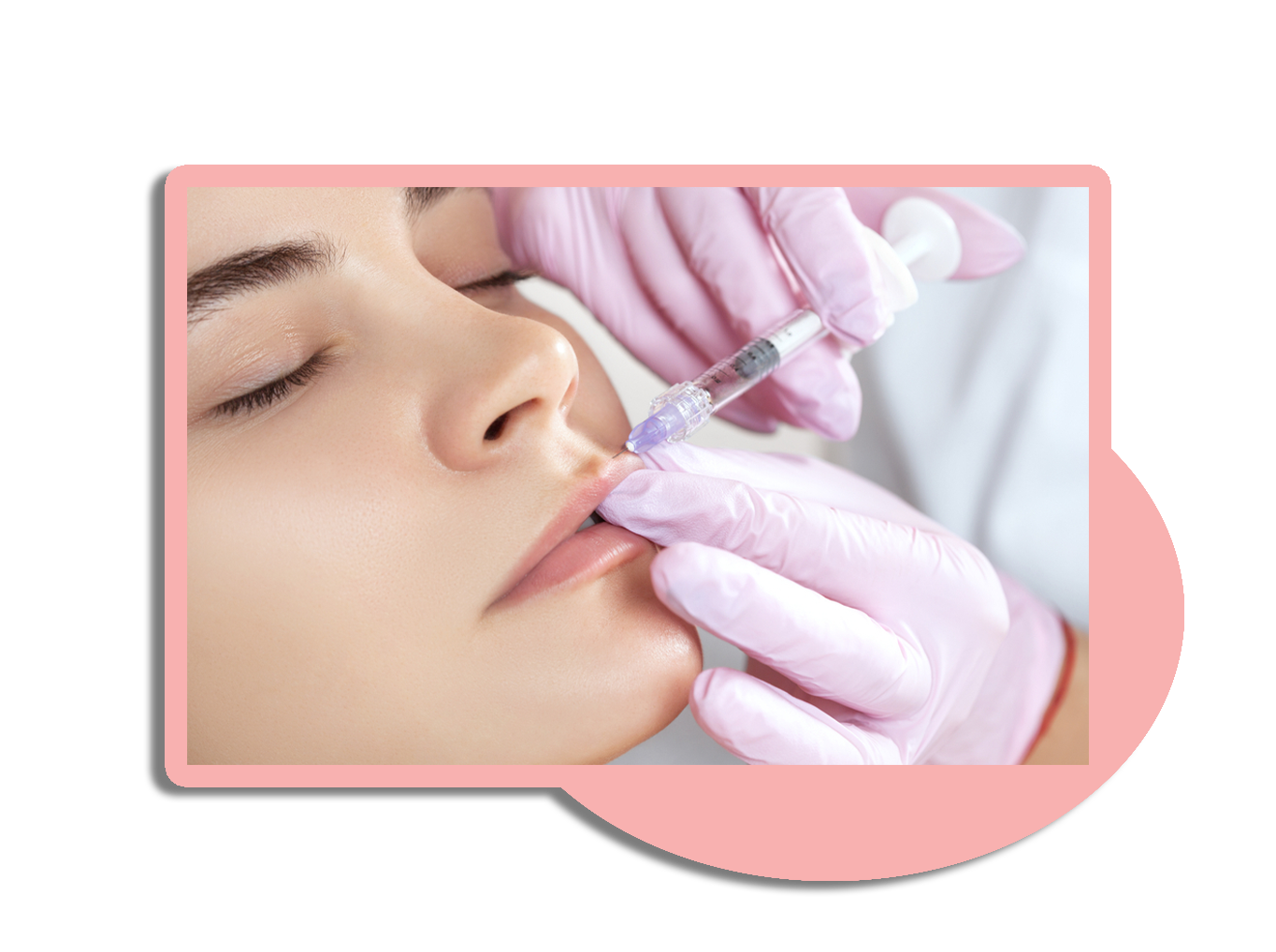
Dermal Fillers
Dermal fillers help to diminish facial lines and restore volume and fullness in the face.
As we age, our faces naturally lose subcutaneous fat. The facial muscles are then working closer to the skin surface, so smile lines and crow’s feet become more apparent.
The facial skin also stretches a bit, adding to this loss of facial volume. Other factors that affect the facial skin include sun exposure, heredity and lifestyle.
What dermal fillers can do
- Plump thin lips
- Enhance shallow contours
- Soften facial creases and wrinkles
- Improve the appearance of recessed scars
- Reconstruct contour deformities in the face
- Decrease or remove the shadow of the lower lids
Dermal fillers can be very helpful in those with early signs of aging, or as a value-added part of facial rejuvenation surgery.
What dermal fillers can’t do
For some patients, surgery such as a facelift, brow lift or eye lift may be the best approach. Minimally invasive rejuvenation treatments, such as soft tissue fillers, cannot achieve the same results, but may help delay the time when consideration of a facelift becomes appropriate. It is important to remember that dermal fillers are temporary treatments for facial aging and that ongoing treatments will be needed for long-term results.
Laser Skin Resurfacing
Laser skin resurfacing, also known as a laser peel, laser vaporization and lasabrasion, can reduce facial wrinkles, scars and blemishes. Newer laser technologies give your plastic surgeon a new level of control in laser surfacing, permitting extreme precision, especially in delicate areas.
What laser skin resurfacing can improve
- Fine lines or wrinkles around or under your eyes, forehead or mouth
- Scars from acne or chickenpox
- Non-responsive skin after a facelift
- Aged or sun-damaged skin
- Liver spots
- Improve your complexion if you have yellowish or grayish skin tones
- Warts
- Birthmarks such as linear epidermal nevi
- Enlarged oil glands on the nose
How does laser skin resurfacing work?
It’s all about using beams of light. Your surgeon uses the laser to send short, concentrated pulsating beams of light at irregular skin. This removes unwanted, damaged skin in a very precise manner one layer at a time.
Laser skin resurfacing’s targeted approach means there are fewer problems with hypopigmentation, or a lightening of skin, for procedures such as laser acne scar removal.
The laser beam used in laser resurfacing will remove your outer layer of skin, called the epidermis. It simultaneously heats the underlying skin, called the dermis. This action works to stimulate growth of new collagen fibers. As the treated area heals, the new skin that forms is smoother and firmer.
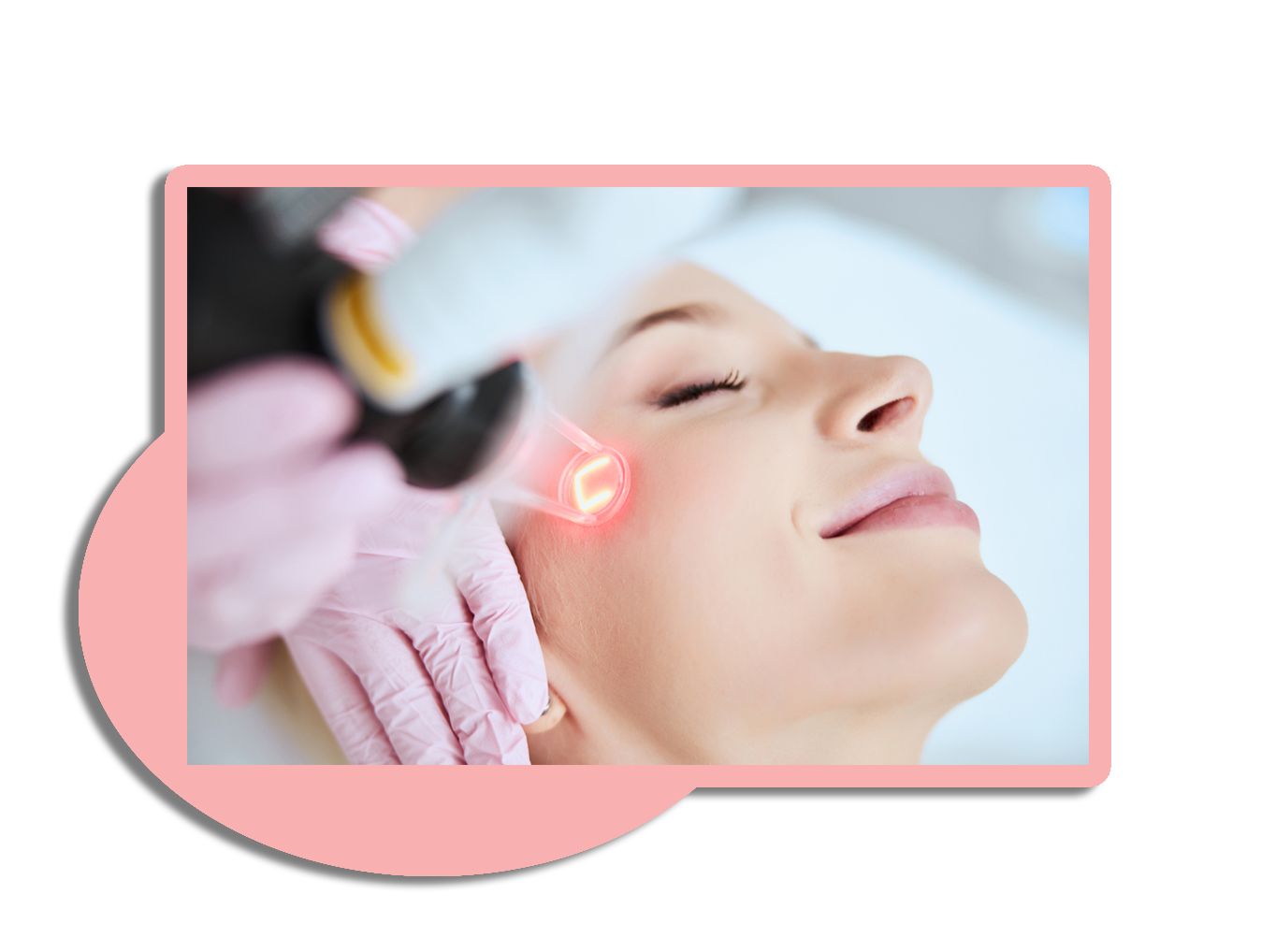
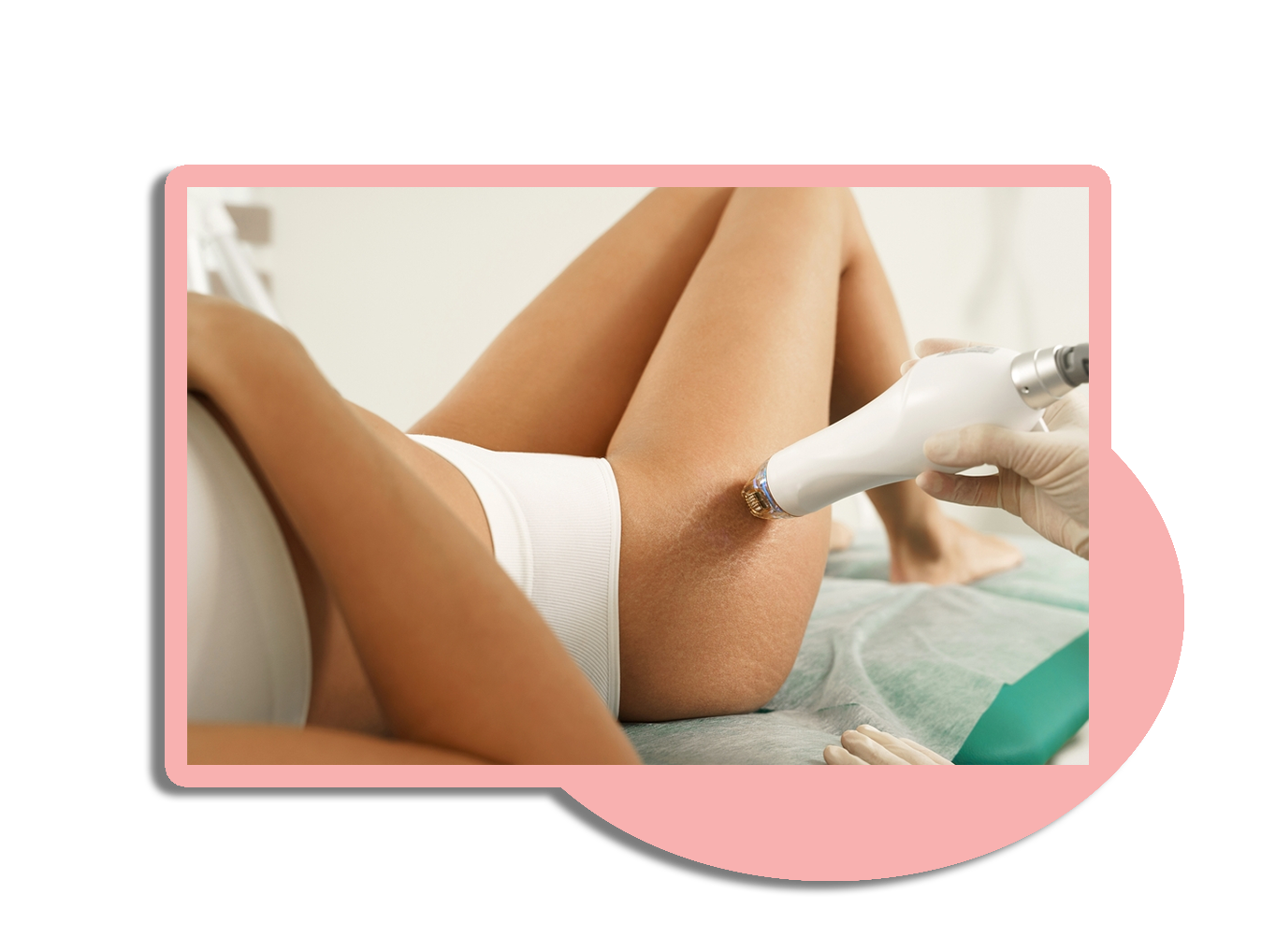
Skin Rejuvenation and Resurfacing
Sun, skin disorders, aging and even heredity can all contribute to skin irregularities on the face and elsewhere on the body. These include textural irregularities like wrinkles and acne scars, pigmentation changes like freckles, sunspots or visible blood vessels. In addition, skin may lose tone, feel less firm and lose the healthy glow that is evident in younger skin.
The following are some of the conditions that different skin rejuvenation approaches can address:
- Static wrinkles: These wrinkles are visible at all times and do not change in appearance with facial movements
- Dynamic wrinkles: These are expression lines that may appear as folds when the skin is not moving, and deepen with facial movements or expressions
- Pigmentation: Freckles, sun spots, or other darkened patches of skin result mainly from sun exposure
- Scars: As the result of acne or injury to the skin, scars may be rolling (a wavy appearance to the skin), pitted, discolored, or have raised borders
- Vascular conditions: Blood vessels visible on the surface of the skin, vascular lesions that appear as tiny blood-filled blisters or even a constant flush of facial redness
- Loss of skin tone: Weakening of the supportive skin structures (collagen and elastin fibers) that result in a loss of skin firmness or the development of cellulite
- Dull skin: Skin that has lost the vibrant glow from a buildup of dead skin cells and clogged pores
Tattoo Removal
Tattoo removal can be achieved in a number of ways, ranging from laser treatments, chemical peels, dermabrasion and surgical excision.
How does tattoo removal work?
Lasers are the most common method of tattoo removal performed today. Tattoos consist of thousands of particles of tattoo ink suspended in the skin. The normal human immune system typically removes small foreign particles from the skin. Tattoo ink particles are too big to be removed by this system and are thus considered permanent. The use of lasers helps to break up these particles into smaller pieces that can be removed by the immune system.
Laser treatments work by targeting the ink particles in the skin with highly concentrated light waves that heat up the ink particles and cause them to fragment into smaller particles that are able to be cleared away by the body’s immune system.
Complete removal of a tattoo is usually not accomplished in one laser treatment session. Laser tattoo removal typically requires more than one treatment to reduce the size of the ink particles and make it easier for them to be dispersed by the immune system.

